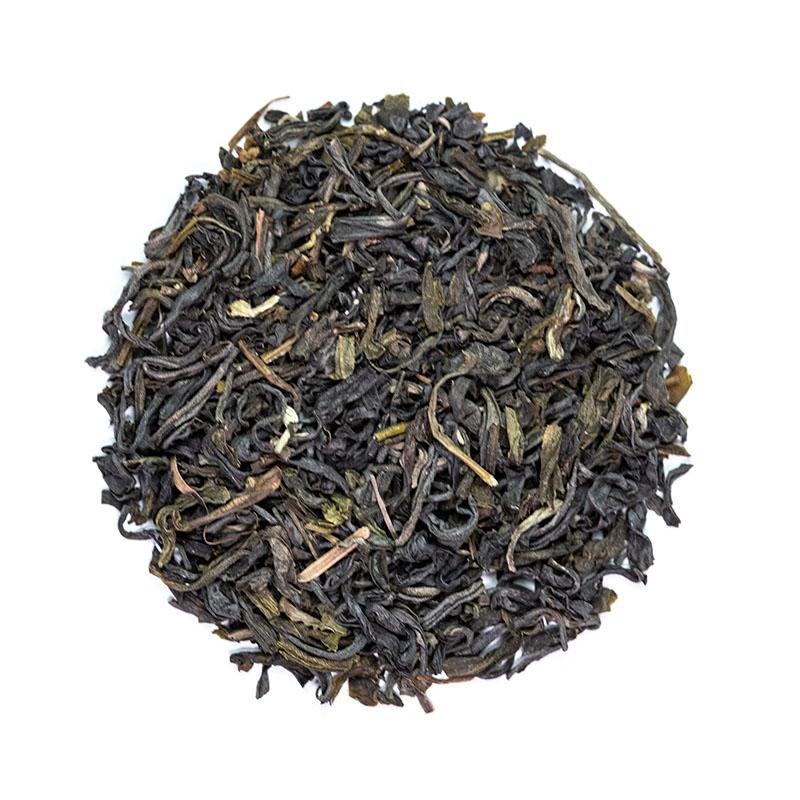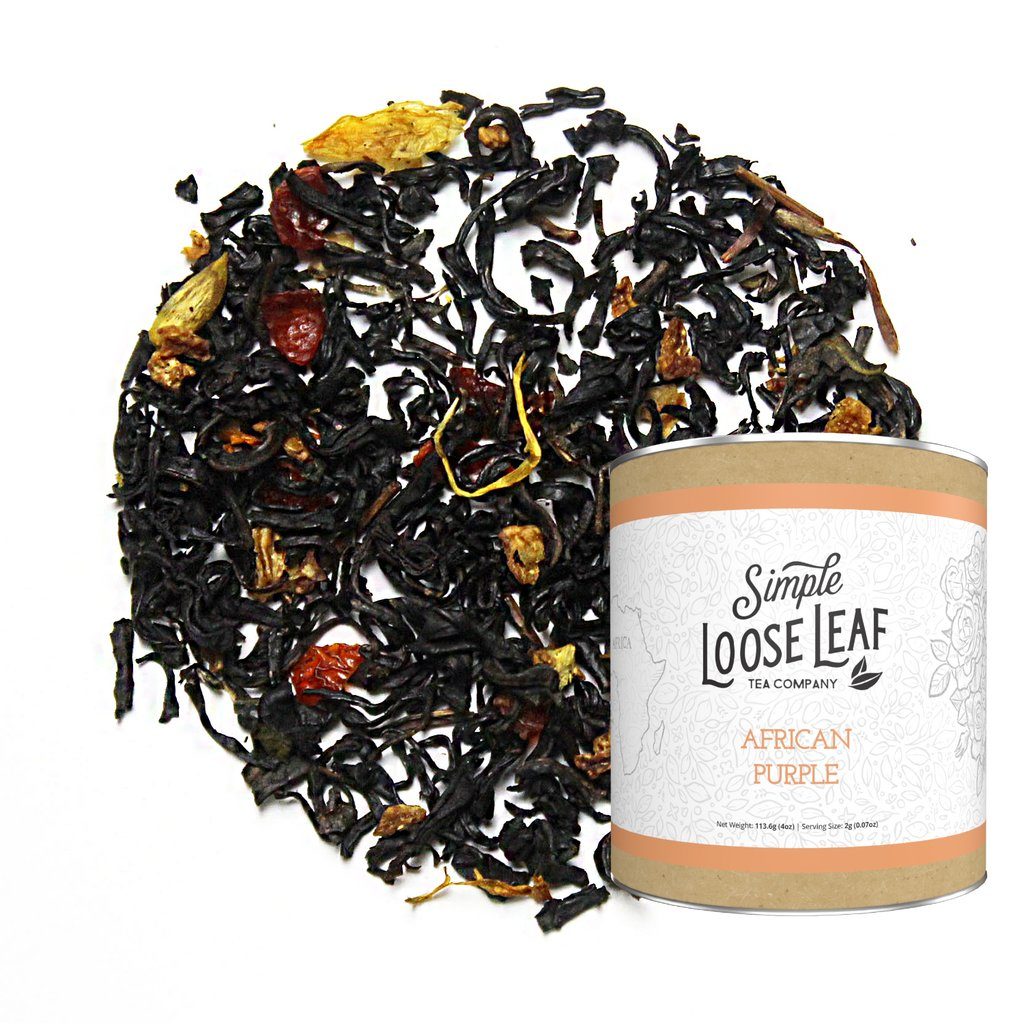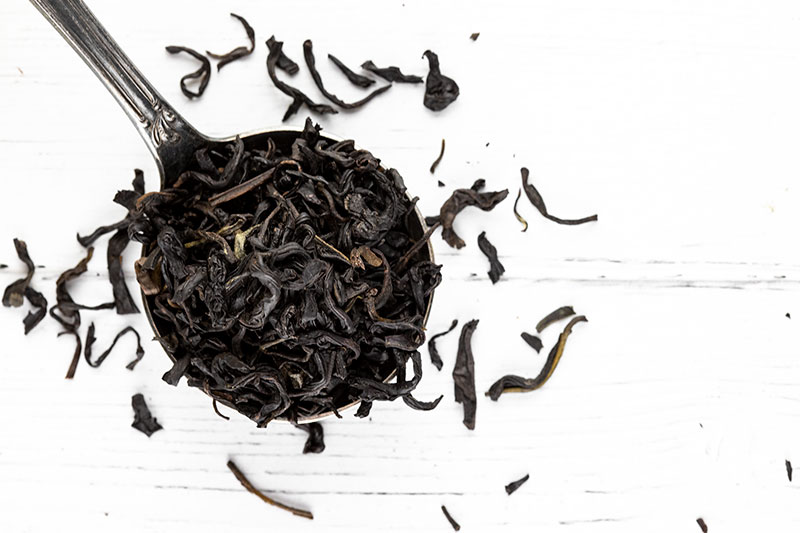What is Kenyan Purple Tea?
If you like purple and blue vegetables and fruits, purple tea may be your next favorite drink. However, don’t expect a purple or blue color drink – expect something much better – a delicious tea packed with more anti oxidants than any other tea type. Besides, you may be among first people tasting and enjoying the newest and very likely, the healthiest invention of the modern tea industry.
What is purple tea?
Purple tea is a special type of tea produced mostly in Kenya, and smaller amounts in Japan, China and India. Unlike yellow, green, oolong, black, dark or white tea, purple tea is not a tea type–it’s a cultivar called TRFK 306/1 that can be used for making all types of tea. It’s a tea that contains same anti oxidants as purplish and blueish fruits such as blueberries, red cabbage or chokeberries – anthocyanins. In fact, purple tea contains very high levels of anthocyanin – 135 times more than regular green tea.
However, purple tea doesn’t brew into a cup of purple-colored tea. The name comes from the fresh tea leaves of a tea plant that have a distinguishable purple hue. Naturally purple or blue color in teas is very rare, such as deep blue intense color of a herbal Butterfly Pea Flower tea.
Health benefits of purple tea
All real teas come from camellia sinensis and have a similar composition when they are fresh, with some differences between different cultivars. However, during the production processes, that composition changes. This is what makes every type of tea and their benefits different. For example, green tea contains the most EGCg than other types, because most of it is preserved during production. Pu erh contains bacteria and fungi, that may be beneficial for digestion. Furthermore, each tea is made from different cultivar, and that has a lot of impact on the final chemical composition too. This is exactly what makes purple tea unique – a use of specially developed cultivar that contains a type of antioxidant commonly found in purple or blue foods like blueberries or acai berries – a pigment called anthocyanin.

Purple tea blended with green jasmine tea
That might be a reason why purple tea has a much higher free radical scavenging[1] rate of 52%, compared to green tea with 34% or black tea with 28 percent[2]. A recent research showed that purple tea may be better than other types of tea for potential cancer treatments, especially lung, breast, uterine and colorectal cancers[3]. Purple tea could be a great dietary choice for brain protection in „neurodegenerative conditions.[4]“ Another research showed that purple leaf tea may have an anti-obesity effect, and help with weight loss[5].
About African purple tea
African purple tea is a relatively new tea on the market. Tea research foundation of Kenya created a Purple tea clone to add more value to Kenyan tea assortment and reach higher price on the market. With most of Kenyan teas being mass produced, Kenyan purple tea is a more than welcomed refreshment in the world of specialty tea. Development took 25 years before the Tea Research Institute released it for commercial cultivation in 2011[6]. And, it has not yet stopped[7]. It’s likely to see purple tea plants in future with even better characteristics and purple tea becoming more widely spread and enjoyed around the world. Today, it’s still produced by only a smaller number of tea gardens, mostly on a high elevations of Nandi Hills.

Tumoi Purple Tea from Kenya with rosehips, calendula and lemon peel
Caffeine content
Just like all other real types of tea, purple tea contains caffeine too. However, that amount may be lower than in black or green tea[8]. If you are very sensitive to caffeine, it’s better to avoid any real non-decaf tea in the evening. If you want to reduce the amount of caffeine in tea, use cooler water, steep for shorter time, or use less leaves. Alternatively, discard the first 30-40 seconds infusion that usually contains more caffeine from subsequent infusions. However, by using this method you are likely to discard the best flavor too.
How to Make Purple Tea
To make a cup of purple tea, it’s always best to follow the instructions of the packaging. If your purple tea is black, then brew it as you would usually brew black tea – with nearly boiling water for about 2-3 minutes. If you are brewing green purple tea, brew it for one to two minutes with the water temperature of around 176°F.
Brewing Tips
- Always use fresh spring water and try not to re-boil the same water.
- Use clean teaware.
- Measure the right amount of tea leaves per cup of water and adjust the ratio if needed. The flavor will depend on this ratio greatly.
- For easy brewing, place tea leaves into a linen tea bags and steep.
- Re-steep the tea leaves as if you were with making any other tea.
Disclaimer: This article is for informational purposes only. It’s not intended to replace medical advice, diagnosis or treatment. Every person is different and may react to different herbs and teas differently. Never use teas or herbs to treat serious medical conditions on your own. Always seek professional medical advice before choosing home remedies.
References:
[1] https://www.longdom.org/open-access/purple-tea-composition-and-inhibitory-effect-of-anthocyaninrich-extracton-cancer-cell-proliferation-2167-0412-1000322.pdf
[2] https://www.longdom.org/open-access/purple-tea-composition-and-inhibitory-effect-of-anthocyaninrich-extracton-cancer-cell-proliferation-2167-0412-1000322.pdf
[3] https://www.longdom.org/open-access/purple-tea-composition-and-inhibitory-effect-of-anthocyaninrich-extracton-cancer-cell-proliferation-2167-0412-1000322.pdf
[4] https://www.researchgate.net/publication/251877602_Kenyan_purple_tea_anthocyanins_ability_to_cross_the_blood_brain_barrier_and_reinforce_brain_antioxidant_capacity_in_mice
[5] https://www.ncbi.nlm.nih.gov/pmc/articles/PMC4502735/
[6] https://economictimes.indiatimes.com/news/economy/agriculture/assam-has-potential-to-produce-purple-tea-expert/articleshow/45666579.cms
[7] http://www.kalro.org/tea/?q=Purple%20Tea
[8] https://www.longdom.org/open-access/purple-tea-composition-and-inhibitory-effect-of-anthocyaninrich-extracton-cancer-cell-proliferation-2167-0412-1000322.pdf




